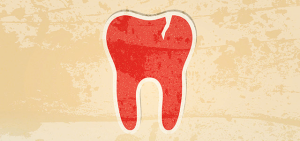When you bite down, do you feel a sharp pain? Maybe it quickly disappears or perhaps you ignore it. You may avoid foods or chew only on one side of your mouth. You might not even be able to tell which tooth hurts or whether the pain is from an upper or lower tooth. Does this sound familiar? If so, you may have a cracked tooth. A crack may appear as a hairline fracture, running vertically along the tooth. It is often invisible to the eye and may not show even on x-ray. A cracked tooth hurts because the pressure of biting causes the hairline crack to open. When you stop biting, the pressure is released and a sharp pain results as the crack quickly closes. Tiny cracks are common and usually do not cause problems. Regular dental appointments are important as they allow your dentist to diagnose and treat problems in the early stages. If you continue to have pain, avoid chewing on that side of your mouth and call your dentist. Depending on the size and location of the crack, treatment may vary from bonding to a crown to hold the crack together. Treatment may also include endodontic treatment if a pulp or nerve of the tooth has become involved. A severely cracked tooth may need extraction if the fracture is too deep and in those cases the tooth cannot be treated and retained in the mouth. Your dentist will assist you in making the best decision for treatment of a cracked tooth. For further information visit Cracked Tooth Syndrome.

